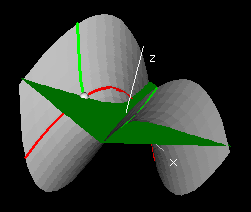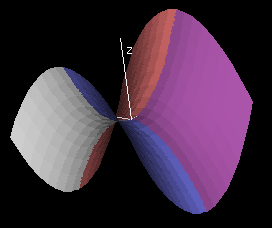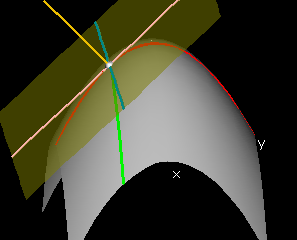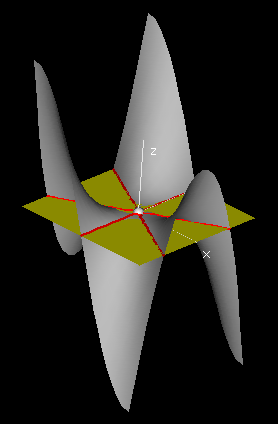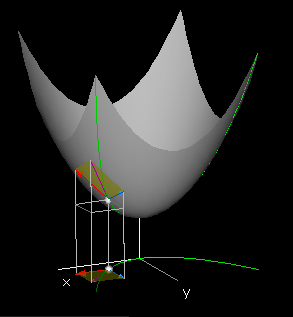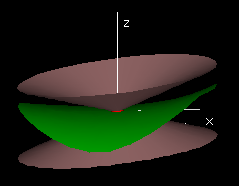At the end of Section 2, we will develop formal criteria for differentiability, and in the meantime, we will investigate properties that a tangent plane must have.
If there is a well-defined best-approximating plane, then the intersection of that plane with a vertical plane over a line in the domain will be a line which is the tangent line to the slice curve over the line. In particular, for the slice curve (x,y0,f(x,y0)), the tangent line will lie in the tangent plane, if such a plane exists. The slope of this tangent line is called the x-partial derivative of f at (x0,y0), denoted fx(x0,y0).
It follows that fx(x0,y0) is the x-slope p of the linear function L(x,y). It is called the x-derivative of f at (x0,y0) or the partial derivative of f with respect to x at (x0,y0), denoted fx(x0,y0). Similarly the y-slope q of L(x,y) is called the y-derivative of f at (x0,y0) denoted fy(x0,y0).


